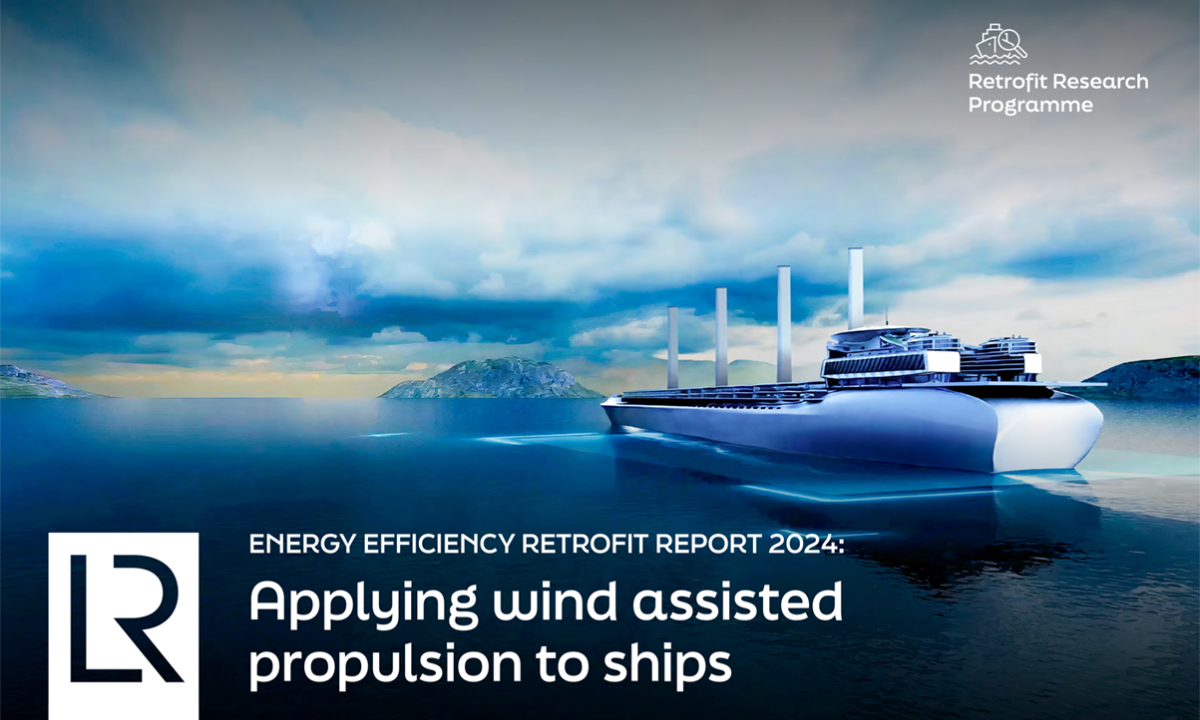Report says, standardising verification of fuel savings and scaling-up equipment supply chains will accelerate WAPS take up
Posted on: 20 August 2024
The application of wind-assisted propulsion systems (WAPS) across a variety of vessel types is nearing a tipping point with deployment likely to increase rapidly, but the lack of standardisation for verifying fuel savings and concerns about equipment availability must be addressed, says Lloyd’s Register’s new Applying wind-assisted propulsion to ships report.
With the industry close to achieving 100 installations and the orderbook reflecting the diversity of vessel types employing WAPS, along with increasingly substantial deployments as technologies move beyond prototype and pilot phases, the absence of a standard for verifying potential fuel savings is creating uncertainty for operators looking to select solutions.
With WAPS deployment likely to increase rapidly, driven by growing shipyard and operator familiarity with solutions, scaling up the supply chain to meet expected demand is a potential challenge. With several suppliers delivering very few units today – but with more suppliers set to enter the market in the near future – shipowners and operators will need confidence that WAPS suppliers can remain competitive and deliver increasing numbers of units without jeopardising project timeframes.
The report also points to the need for a wider base of shipyards with installation capabilities to meet expected demand, with only around 16 yards to date having carried out WAPS retrofits. While installations are not unfeasibly complex, they may be best implemented over multiple time periods, so project planning is a key consideration. Coordinating installations with scheduled maintenance and component lead times, while working out the best time to install, safeguard compliance and minimise carbon cost exposure can prove challenging, the report says.
Dr Santiago Suarez de la Fuente, LR’s Ship Performance Manager, said: “Wind-assisted propulsion systems are increasingly being used by ship operators to reduce fuel consumption, meet energy efficiency regulations and minimise exposure to carbon costs. With 29 installations between 2018-2023 and 72 in the orderbook, LR’s new research report demonstrates that there is growing confidence in the available solutions.”
Gavin Allwright, Secretary, International Windship Association, commented: “There is a perfect storm brewing when it comes to reducing GHG emissions in shipping. New regulations, price challenges for existing and new fuels along with the growing pressure from cargo owners to reduce scope three emissions. These are driving the deployment of wind propulsion technologies, both as wind-assist and primary wind, retrofit and newbuild, however these systems need to be robust, safe and validated in order to build trust in the market and lay the foundation for scaling these across the fleet.”
The Applying wind-assisted propulsion to ships report collates technology insights from LR and industry experts. It includes an in-depth analysis of the current market, cost and compliance drivers, regulatory issues and technical challenges.
LR has been instrumental in driving industry knowledge in WAPS solutions. It developed the first open access online calculator for Flettner rotor fuel savings and has conducted numerous feasibility studies, engineering studies and performance validations on behalf of ship owners and operators, as well as issuing numerous approvals in principle for WAPS solutions.
Applying wind-assisted propulsion to ships is the latest report under LR’s Retrofit Research Programme, following the Engine Retrofit Report, which delivers insights to support shipowners and operators in applying clean fuels and energy efficiency solutions to existing ships.




